英语教学法课件
- 格式:doc
- 大小:51.50 KB
- 文档页数:11


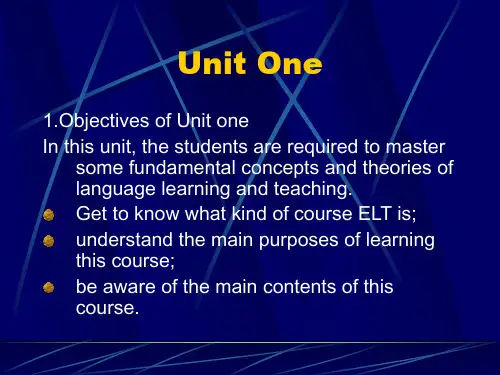
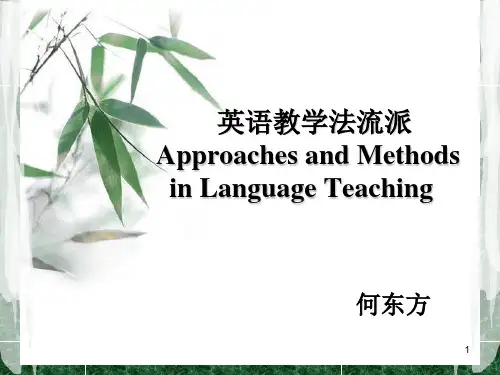
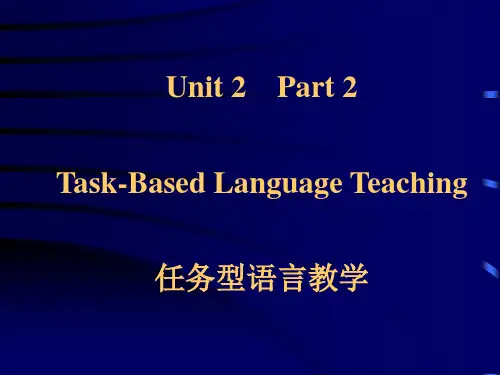
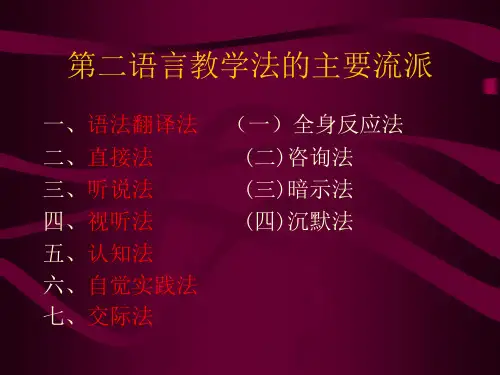

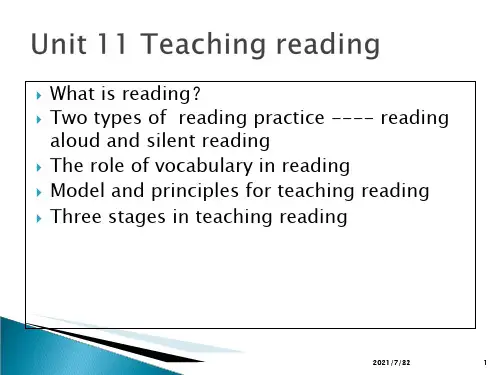
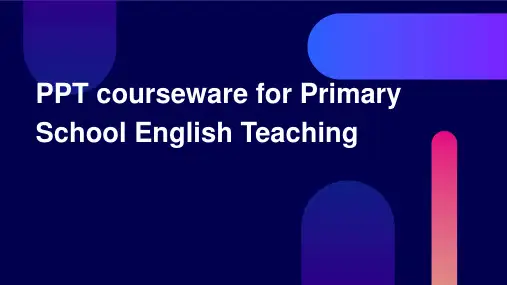
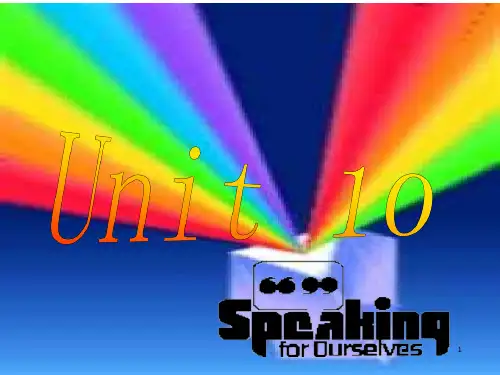
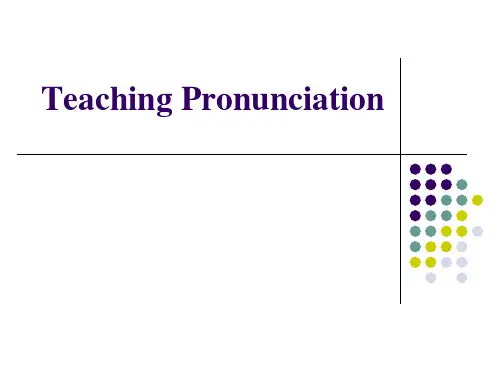
Unit 12 Teaching WritingAims of the Unit- to understand the nature of writing in realityto learn a communicative approach to writing- to be aware of the problems in writing tasks in existing textbooksto understand the process approach to writingWriting through e-mail12.1 What, why and how do we write?What do we write?Writing is a real-life reality. Whether it is in social, work or study situations, we write to get things done and to form and maintain social relationships.In reality there is a great variety of things we write for example, letters, journals, notes, instructions, posters, essays, reports, menus. We fill in forms, answer questionnaires and similar tasks.Why do we write?We write for various reasons, such as to convey messages or just to keep a record of what is in our mind.Reasons why we should get students involved in writing in a foreign language:Writing can give a voice to shy students as writing can serve as a medium through which less confident students can communicate with their teacher.Writing can be less threatening for anxious students as it gives them time to think about their meaning and purpose (Morgan, 2005).Writing can also raise awareness of how language works. Through writing, students will become more familiar with the linguistic and social conventions of writing in English.Principles for teaching writingChoose the proper model for teaching.Make the writing tasks for real communication.Focus on the process rather than the product.Instruct clearly for each stage.Integrate writing with reading, listening, and speaking.Pay attention to both product assessment and process assessment.Basically, in teaching writing the teacher of English needs to give equal weight to clarity of expression, preciseness, conciseness, frequency, accuracy, and the ability to organize andsummarize ideas.12. 2. A communicative approachto writingMechanical writing activities that are done in traditional ELT classroom do not by themselves motivate students. To motivate students, it is necessary to engage them in some act of communication. This means writing for a specific recipient or engaging in an act of creative writing where their work is intended to be read by an intended audience.In short, students can be motivated by authentic writing tasks that have some communicative elements.Some writing activities can be between “writing for learning” and “writing for communication”.12. 3 Problems in writing tasksMany writing tasks, both in existing textbooks and in classroom teaching, fail to have a communicative element due to the following deficiencies:1. They are mainly accuracy-based.2. They are designed to practice a certain targetstructures.3. There is insufficient preparation before the writing stage.4. There is no sense of audience or authenticity.5. Students are given ideas to express rather than invited to invent their own.6. There is no opportunity for creative writing, particularly for expressing unusual or original ideas.7. Many of them are test-oriented.12.4 A Process Approach to Writing1. What is process approach to writing?The teacher provides some help to guide the students through the process that they undergo when they are writing. Of course this kind of guidance should be gradually withdrawn so that the students finally become independent writers.2. What are the features of process writing?Features of the process approach to writing summarized by Brown (1994:320-321):Focus on the process of writing that leads to the final written product;Help students writers to understand their own composing process;Help them to build repertoires of strategies for prewriting, drafting, and rewriting;Give students time to write and rewrite;Place central importance on the process of revision;Let students discover what they want to say as they write;Give students feedback throughout the composing process; (not just on the final product) to consider as they attempt to bring their expression closer and closer to intention;Encourage feedback both from the instructor and peers;Include individual conferences between teacher and student during the process of composition. Suggestions on the Process Approach to WritingBefore writing, students work together to brainstorm topics and ideas.While writing, students should finish it by themselves.After writing, there are a lot of options for the teacher to decide what to do next, e.g. peer reading,discussion, rewriting.The teacher could provide the students with a checklist to guide their peer reading and feedback. In other words, writing activities should serve to encourage a process of brainstorming, drafting, writing, feedback, revising and editing, which proceeds in a cyclical fashion resembling the writing process of a real writer. These types of activities should ‘encourage the idea that learning to write is more important than creating a final product; it is the learning of a series skills leading to the product.’ (Sokolik, 2003:96)Process-oriented ApproachPre-writingDraftingRevisingSecond draftTeacher’s feedback1) The Process of WritingDraftingOrganizeExplore the new ideaEditCheck idea and organizationCorrectingCorrect mistakes, such as spelling, usage, punctuationPublishingShare it with othersPre- writing activitiesCollect material,Choose object and audienceThe process approach pays attention to pre-writing, while-writing and post-writing activities. Creating a motivation to writeBrainstormingMappingFreewritingOutliningDraftingEditingRevisingProofreadingConferencingCreating a motivation to writePurpose or reason to writeInterestBrainstormingStudents’ thoughts can be inspired by each other’s sparkling points.The more important is to get the students to think freely and put down all possible ideas that come to their mind.MappingMapping will give students the opportunity to select from the list these useful ideas to be included in their writing and also to see how these ideas can be put together in a coherent and logical way to present a convincing argument.As pointed by Morgan (2005), when students see their ideas emerge visually on the page, it can stimulate more ideas.Free writingStudents are required to write anything that comes to their minds as quickly as possible without caring much about spelling and grammar.Free writing can help students develop fluency in writing.OutliningAn outline usually illustrates the main organising structure and the most important points of the essay.Main idea of each paragraph;Notes for supporting details;An introduction and a conclusion.It can be changed as the writer has better ideas.DraftingAt this stage, students should be given more time to write the first draft and developing ideas is more important than getting grammatical structures, punctuations or spelling correct.EditingEditing is the stage when students read through their writings and check the clarity of ideas or the logical development of their arguments.Self-editing and peer-editing(what’s the benefit in editing?)Exchange of ideas between editors and writers and justification of ideas.RevisingRevising is the stage when teachers guide students to make necessary improvements in both organization and contents based either self-editing or peer editing, eg. adding new points or deleting irrelevant facts, and correcting errors in spelling, punctuation, grammar or choice of words.Revising can take several rounds, so students need to be prepared to write a second or third draft before they submit the final draft.Proofreading(校对)The final stage in writingTo read the writing for mistakes in grammar, spelling, punctuation, or capitalization. Independent proofreading is encouraged.Teachers should limit their involvement in making corrections for the students. They do not need to present all the correct forms. They can underline those problematic items and leave them for the students to do the correction themselves.In order to keep tract of how students do self-correction, a form can be used so that both teachers and students can check from time to time to see if the same mistakes/errors are repeated.ConferencingConference here refers to a private meeting between the teacher and each individual student. It is very important to talk face to face with students about their writing, pointing out their strength and weakness. For small classes, if possible, conferencing with individual student can be done once or twice during a semester and 5-10 minutes for a student. For a number of large classes a teacher teaches, there can be a class conference focusing on the main problems and features of good writings.In commenting the students’ writing, teachers should keep in mind that teachers’ attitude can influence students’ confidence and motivation to write. So during the teacher-student conferencing, teachers need to encourage rather than criticize, be constructive rather than destructive and try their best to protect students’ self-esteem.Even after the marks are given, teachers can still allow students to continue improving their writing. In other words, students can revise their writing again if they are not satisfied with the grade and a new grade can be given if better improvement is made within the time frame given to encourage individuals to be more self-directed in learning.From the above discussion, we can see that writing tasks can involve a lot of oral discussions. This is because writing and speaking are always related to each other because both are forms of language production, and in reality, much writing is done based on what has been discussed, for example, in group project work. And in teaching, we try to advocate integrated teaching of language skills.12. 5 Motivating students to writeIs writing an interesting skill to develop?The way to motivate students to write is a key point to the successful teaching of writing.1)Make the topic of writing as close as possi ble to students’ lifeGiving students a few topics so that they can choose what they want to write about can be a way to meet the needs and interests of different learners.2) Leave students enough room for creativity and imaginationStudents like to use extraordinary ideas to write.3) Prepare students well before writingSome pre-writing activities are necessary.4) Encourage collaborative group writing as well as individual writingDesigning group writing activities once in a while can greatly motivate students to write. It can also provide an opportunity for different students to exercise different talents. In this kind of writing activity, they can help each other and learn from each other.5) Provide opportunities for students to share their writingsTeachers can organize class presentation or group presentation to allow students to share their writings. It can provide another opportunity for students to learn from each other.6) Provide constructive and positive feedbackGiving feedback is integral part of teaching writing. Every student wants his/her writing to be read seriously by the teacher or their classmates.The feedback should include at least three elements:1) positive comments on the good features of the piece of writing;2) areas for improvement; 3) your personal opinion on the issue the writer has discussed in his / her writing.Feedback for each writing should be personal and specific so that it can help build up a trust between teachers and students. Students will feel more motivated to write if he /she realizes that the teacher takes his/her writing seriously and discusses with them in meaningful ways.7) Treat students’ errors strategicallyTeacher’s attitude towards errors plays a key role in motivating students to write. As making mistakes is an inevitable part of the learning process, teachers should encourage students to take risks to use new vocabulary and structures in their writing. If teachers often show negative attitude towards errors, students will not dare to take risks but use only very simple words and structures in order to guarantee accuracy. Eventually, they make no obvious progress in their writing skills.8) Give students a sense of achievement from time to time.Progress in writing is usually a slow process and it is not easily observable. And this can easily discourage many students. Therefore, enabling students to experience a sense of achievement from time to time is quite crucial in motivating students to continue writing practice.Organizing a writing conference, displaying works in a writing exhibition in the classroom and publishing a class writing newsletter are all good ways to give students a sense of achievements. The limitation may be that we do not have enough space to exhibit all the writings of all the students. In this case, guiding students to create their own writing portfolio is a good way to encourage every student. Each portfolio can be a unique file of writing because each student can decide what to put in his/her portfolio and how to design it. A portfolio can demonstrate the progress made as one examines the whole writing process through first draft, second draft to the final product with peer editing comments and self reflection.12.6 Using the internet to promote process writingTraditional way of writingResearch indicates, rather than handing in the ‘perfect’ final product, students are more willing to submit drafts one at a time to the teacher and revise their work after seeking comments or advice from the teacher (Warschauer,1995). In doing so, the traditional hand-in-and-return method will not suffice.E-mail provides a perfect mechanism for students to submit drafts and for teachers to look them over at their convenience and send them back with comments--- once, twice or several times. New ideas are shared promptly and can be responded to quickly. Another advantage is that the teacher can easily store all the drafts of a document for later review and analysis of the revision process. All these help promote the application of the process approach to writing in ELT classroom.The students can send their work to each other to exchange and share ideas.When writing through e-mails, students have a feeling of real-time writing. They feel that they are writing for real purposes of exchanging ideas.Besides e-mails, Blogging and BBS are also very useful ways in teaching writing. The teacher canset up a class writing blog or BBS for writing tasks. Students can paste their assignments on the blog or BBS. In this way, students in the same class can read and comment on each other’s writings. It can motivate students to write and give them a real sense of communication through writing.。